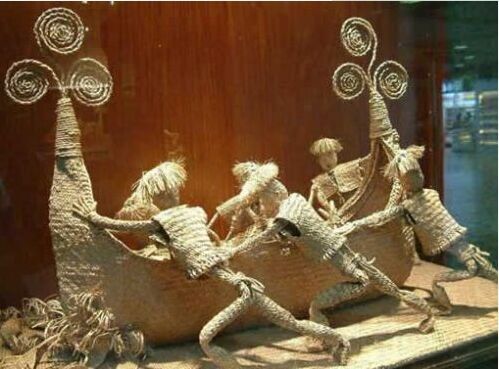
Your Location : Home / News Center >> Industry News >> Laizhou straw: Qilu civilization woven for thousands of years
Laizhou straw: Qilu civilization woven for thousands of years
Release time:2016-04-06 Hits: 【Print】
Laizhou straw: Qilu civilization woven for thousands of years

The straw craft has a history of 7,000 years. The earliest straw crafts in China originated from the Hemudu period. According to the "Book of Rites", the Zhou Dynasty has been prepared by Wan (Pangcao), and there was a professional " "Grass" has been widely used in the Spring and Autumn Period and the Qin and Han Dynasties. From Han to Tang, the straw craftsmanship has been very developed, and the straw art that is especially distributed in the Yellow River Basin has the most distinctive features.
It is generally believed that the straw crafts in various parts of China were originally transmitted from Shandong, and the straws from all over Shandong were from Jixian. In the Spring and Autumn Period, Jixian County was the Lai Kingdom, and the Ming and Qing Dynasties belonged to Laizhou Prefecture. Therefore, the county grass is also known as "Laizhou straw." In 1915, Laizhou straw was awarded the Panama International Gold Award and later won numerous awards internationally. It began to be exported in the 1960s and was one of the earliest commodities in China to enter the Western market.


The straw grass of Jixian County is made of wheat straw and corn husk as raw materials. Although the straw product is simple in materials, the preparation process is complicated. To make practical products, we must first sort and classify the straws according to their thickness. Corn husks should be selected from the middle layer. The middle layer has strong skin fastness, good elasticity and soft fiber.
After the raw materials are selected, the raw materials are cut into a number of thin strips by tools and then braided. After the straw is braided into a hoe, according to the design requirements, a variety of straw products are compiled. If the product is made, then the weaving process is more complicated. In addition to the above bleaching and dyeing processes, the raw material should be flattened, then cut with a knife, or cut obliquely into pieces. Come to decorate birds and flowers. Lightweight, non-heat transfer, non-absorbent, soft and tough, some have natural color, and some can be artificially dyed, beautiful and practical.
